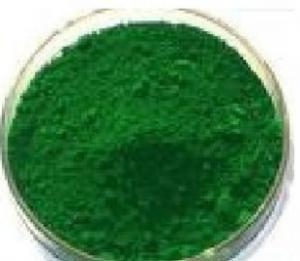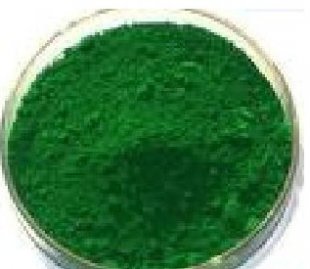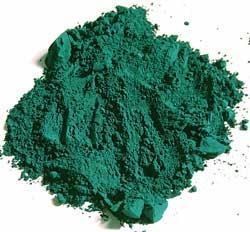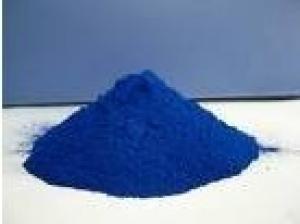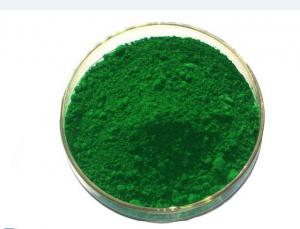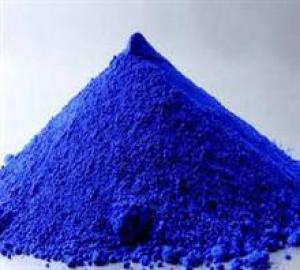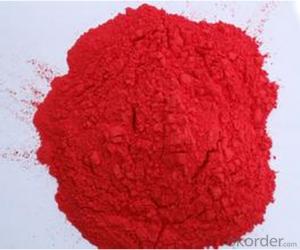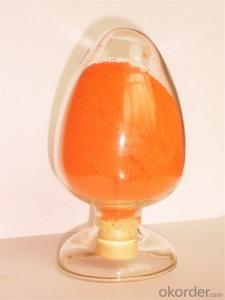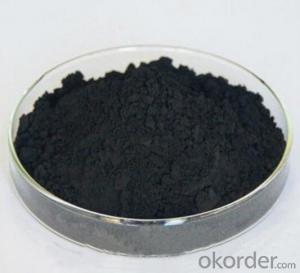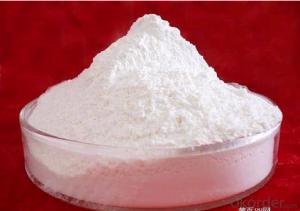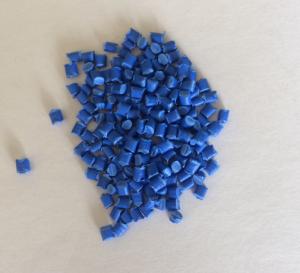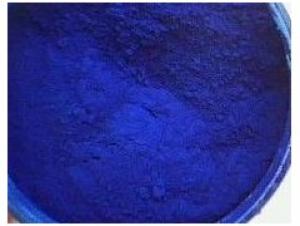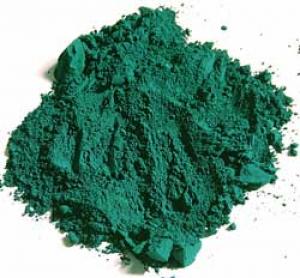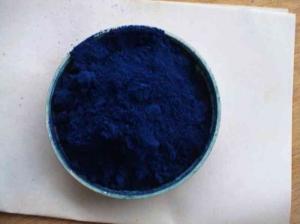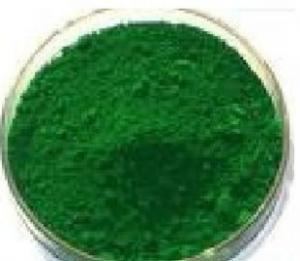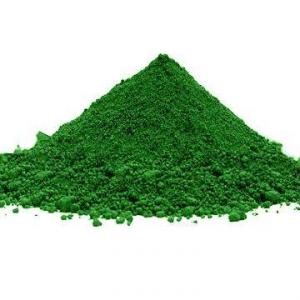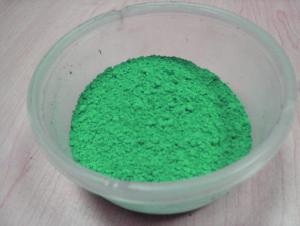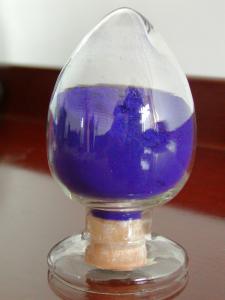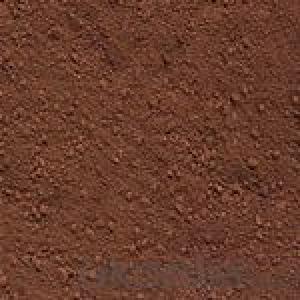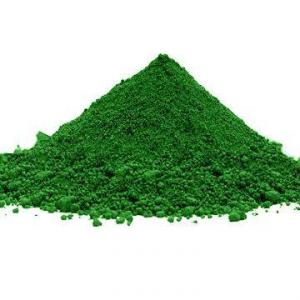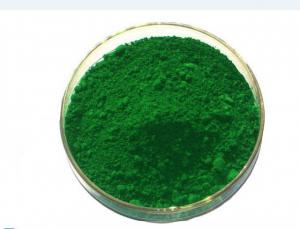Phthalocyanine Green
- Loading Port:
- Qingdao Port
- Payment Terms:
- TT or LC
- Min Order Qty:
- 1 Metric Ton m.t.
- Supply Capability:
- 7,500MT/Year m.t./month
OKorder Service Pledge
OKorder Financial Service
You Might Also Like
Production Details Of Phthalocyanine Green L8710
| |||||
Chemical Structure | CuPc Halide | ||||
Color Index No. | PG 7/74260 | ||||
Application | Paint | ||||
Physical Form | powder | ||||
| |||||
Test Items | Index | Test Method | |||
Relative Tinting Strength | 100 +_5% | DIN55986 | |||
ΔE,ΔL,Δa,Δb | ≤1,+1,+1,+1 |
| |||
| |||||
Items | Index | Test Method | |||
PH | 6.5~8 | DIN ISO 787-9 | |||
Density 20℃ g/cm3 | 2.1 | DIN ISO 787-10 | |||
BET m2/g | 61 | DIN 66131 | |||
Oil absorption g/100g | 32~42 | DIN ISO 787-5 | |||
105℃ Volatile Matter | ≤1.0% | DIN ISO 787-2 | |||
Water Solubles | ≤1.5% | DIN ISO 787-13 | |||
Residue on Sieve 100 mesh | ≤5% | DIN 53195 | |||
| |||||
Solvent Resistance | Index | Test Method | |||
Water | 5 | DIN ISO 105-A03 | |||
White Spirit | 4~5 | DIN ISO 105-A03 | |||
Ethanol | 4~5 | DIN ISO 105-A03 | |||
Acetone | 4~ 5 | DIN ISO 105-A03 | |||
Di methylbenzene | 4~5 | DIN ISO 105-A03 | |||
| |||||
Tolerance | Index | Test Method | |||
Light Fastness | 8 | DIN ISO 105-A03 | |||
Weather Resistance | 5 | DIN ISO 105-A03 | |||
Acid Resistance | 5 | DIN ISO 105-A03 | |||
Alkali Resistance | 5 | DIN ISO 105-A03 | |||
Hot Resistance | 230℃ |
| |||
Packing Of Phthalocyanine Green L8710 :
25kg/ PP bag , or as your requirements.
Suggest Using Of Phthalocyanine Green L8710 :
Recommended for inks,plastic,paints and textile printing.
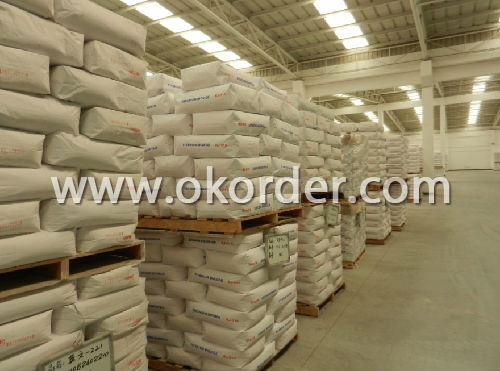
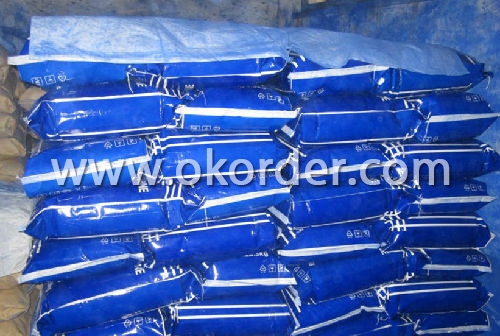
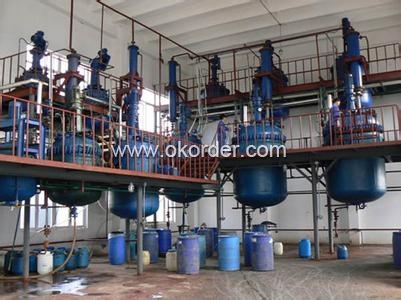
- Q: like what's the definition relating to sunlight
- Pigments are substances which are used familiarly to create pictures and printings. Pigments give an object a color when in a field of incident white light. Pigments themselves absorb a set of incident colors of light and reflect all others. When multiple pigments are mixed, their ability to absorb colors is added, such that their ability to reflect colors is subtracted.
- Q: can the pigment know as Chinese purple form a matter wave in certain circumstances?
- Peaceful demonstrations, which are the sorts urge by governments, are just a way of letting the public let off steam safely without achieving anything. It is most convenient for them - every one has a jolly time, a bit of bantering, and we all go back to the status quo. Just like the House, a lot of empty debates, and the government just goes ahead and does what it wants. The public is beginning to become aware of the severe limitations of democracy as it is practised in the west. There are times, as the government claims, it has to do what has to be done, even though the actions may be 'unpopular', meaning they are not supported by the majority, and therefore undemocratic. Thus, we have supposedly democratic governments doing undemocratic things (and we accuse other countries with different systems of being undemocratic!). In such situations where democratic governments are acting undemocratically, the public surely has a right to resort to actions other than the ballot box (denied them anyway), or futile gestures. The government is supposed to represent majority will in our system; where it ceases to do so, it has lost its mandate, and, should arguable be replaced before the election comes round.
- Q: i would like to now so i could put it in a marker thanks..
- Isn't all ink pigmented? A quick search for make your own ink turned up many recipes. Here is one: Basic Permanent Black Ink: 1 egg yolk 1 tsp gum arabic 1/2 cup honey 1/2 tsp lamp black (buy in a tube or make by holding a plate over a lit candle) Mix egg yolk, gum arabic and honey in a small bowl.
- Q: Explain why plants need a variety of pigments to carry out photosynthesis?
- Each pigment in the leaf absorbs only a very narrow range of wavelength. In order to make use of more light than one specific wavelength, then plants have several different pigments. Chlorophyll A and Chlorophyll B intercept wavelengths from roughly 400-500 nm and then again from 650-700 nm. There are several different carotenoid pigments, each intercepting a pretty specific wavelength. I think these are within 450 - 510 nm. You have a high rate of photosynthesis in the blue range and then again in the red range. (I wasn't able to find a very good image that explains this clearly, but the sources listed below do a decent enough job.) Green light and most of the yellows will be reflected and not used by the plant. Keep in mind that while phytochrome is a pigment, it is not involved in photosynthesis.
- Q: What does it mean when something is highly pigmented?
- Pigment is color. When someone says something is highly pigmented it means that the color is bright or really vibrant. Hope this helped!
- Q: how are the pigments in clothes differ from plant pigments?
- Pigments are pigments. They are made of molecules that absorb some colors and reflect others from the visible spectrum of light, which gives everything color. Black pigments absorb everything and reflect nothing, so black is the absence of color and it is why dark clothing are warmer in winter. White pigments reflect everything and absorb nothing, so clothing that is white is cooler in summer. Most plants have more chlorophyll, a green pigment, in them than other pigments, so the plant is overwhelmingly reflecting green back to our eyes and absorbing the red and blue ends of the spectrum. In fall, when the chlorophyll breaks down, we can see the yellow, orange, and red pigments that are also in the leaf for a few weeks. In this way, all pigments are alike. However, perhaps what your teacher is looking for is that the green pigment chlorophyll in plants not only absorbs red and blue wavelengths of light, it also uses that energy to excite electrons from the molecules of chlorophyll and send them through an electron transport chain that enables light energy to be converted to chemical energy and store it in the C-H bonds of glucose, which is made during photosynthesis. Other pigments, whether they be in clothes or other objects such as cars or just about anything else do not do this. Only plant chlorophyll, or the green pigment in plants, converts light energy to chemical energy. That is the one huge difference. Otherwise, like all other pigments, chlorophyll absorbs some wavelengths of light and reflects others, in the case of chlorophyll, green wavelengths of light.
- Q: i bought the new neon pro pigments from mac , well 5 out of the six and i also bought 'basic red'i want to use these as eye shadows but i dont know howi also bought mac mixing medium for face and body but lol , i dont know how to use any of this stuffwhat can i do to use this stuff i mean will it turn out like regular eyeshadow if i use it right? will there be a shine to it? it will reduce fall out? should i put the mixing medium on my eye first , then let dry?do i need to possibly press the pigments in a pot with some kind of eye shadow liquid?i also bought the mascara mixing medium but want to know exactly what to do with thatand also , can i mix any of the pigments with lipgloss?http://cn1.kaboodle /hi/img/2/0/0/119/a/AAAAAlrx1LUAAAAAARmgiA.jpg
- look on youtube they have all the answers!
- Q: what are accessory pigments?
- Accessory pigments are light-absorbing compounds, found in photosynthetic organisms, that work in conjunction with chlorophyll a. They include other forms of this pigment, such as chlorophyll b in green algal and higher plant , while other algae may contain chlorophyll c or d. In addition, there are many non-chlorophyll accessory pigments, such as carotenoids or phycobiliproteins which also absorb light and transfer that light energy to photosystem chlorophyll. Some of these accessory pigments, particularly the carotenoids, also serve to absorb and dissipate excess light energy, or work as antioxidants. The different chlorophyll and non-chlorophyll pigments associated with the photosystems all have different absorption spectra, either because the spectra of the different chlorophyll pigments are modified by their local protein environment, or because the accessory pigments have intrinsic structural differences. The result is that, in vivo a composite absorption spectrum of all these pigments is broadened and flattened such that a wider range of visible and infrared radiation is absorbed by plants and algae. Most photosynthetic organisms do not absorb green light well, thus most remaining light under leaf canopies in forests or under water with abundant plankton is green, a spectral effect called the green window. Organisms such as some cyanobacteria and red algae contain accessory phycobiliproteins that absorb green light reaching these habitats. For more kindly click on the links below --- en.wikipedia.org/wiki/Accessory_p... en.wikipedia.org/wiki/Photosynthe...
- Q: If they are not the same, then what is the difference? Please help me out here.
- Yes, tannins are pigments but they aren't really the main plant pigment. Plant pigments usually refer to photosynthetic pigments (chlorophyll, carotenoids, etc.). These photosynthetic pigments give the leaves their green color (or yellow/orange in the fall). Tannins are non-photosynthetic phytochemical (involved in plant metabolism and internal functioning), but they are also a pigment. Tannins (and lignins) are brown. This is was gives dead leaves and wood their color. Tannins also leach out of the leaves when soaked in water (same process as brewing a cup of tea). So tannins are pigments when they leach out of leaves and stain water (or other things) brown, but they are not photosynthetic plant pigments. In other words, it depends on what context you are calling a tannin a pigment. In a live plant they are not a pigment (judgment call here). In a dead leaf or when they leach out of a leaf they are a pigment.
Send your message to us
Phthalocyanine Green
- Loading Port:
- Qingdao Port
- Payment Terms:
- TT or LC
- Min Order Qty:
- 1 Metric Ton m.t.
- Supply Capability:
- 7,500MT/Year m.t./month
OKorder Service Pledge
OKorder Financial Service
Similar products
Hot products
Hot Searches
Related keywords
